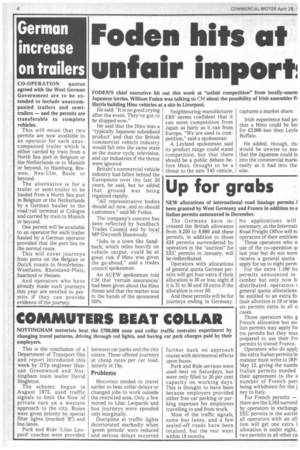COMMUTERS BEAT COLLAR
Page 6

If you've noticed an error in this article please click here to report it so we can fix it.
NOTTINGHAM motorists beat the E790,000 zone and collar traffic restraint experiment by changing travel patterns, driving through red lights, and having car park charges paid by their employers.
This is the conclusion of a Department of Transport film and report introduced this week by DTp engineer Duncan Greenwood and Nottingham team leader David Singleton.
The scheme, begun in August 1975, used traffic signals to limit the flow of private cars on a western approach to the city. Buses were given priority by special filter lights (marked S') and bus lanes_ Park and Ride 'Lilac Leopard' coaches were provided between car parks and the city centre. These offered journeys at cheap rates per car load, latterly at 15p.
Problems
Motorists tended to travel earlier to beat collar delays or changed jobs to work outside the restricted area. Only a few moved to Lilac Leopards and bus journeys were speeded only marginally.
Discipline at traffic lights deteriorated markedly when 'green periods' were reduced and serious delays occurred further back on approach routes with detrimental effects upon buses.
Park and Ride services were used best on Saturdays, but were only filled to 20 per cent capacity on working days. This is thought to have been because employers provided either free car parking or parking expenses for employees travelling to and from work.
Most of the traffic signals, some bus lanes, and a few sealed-off roads have been retained, but the rest went within 18 months.




























































































































